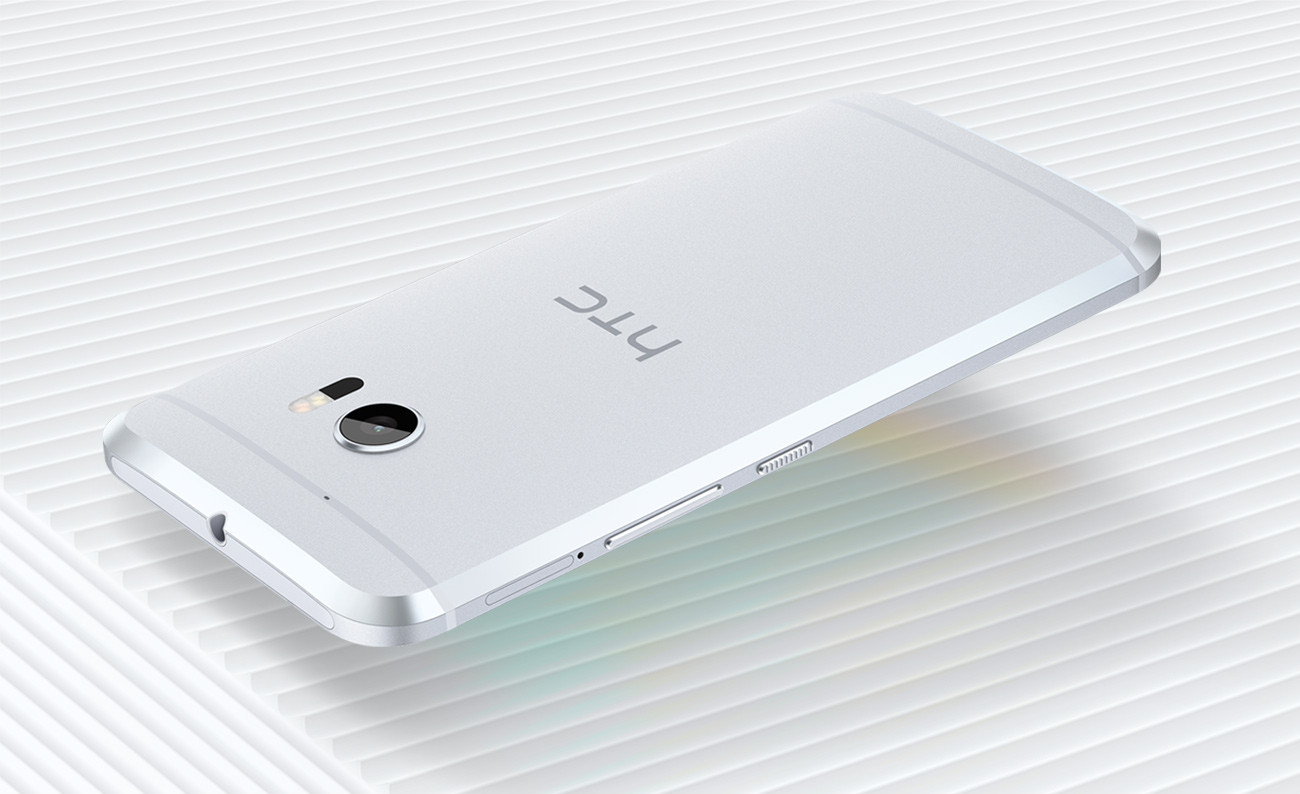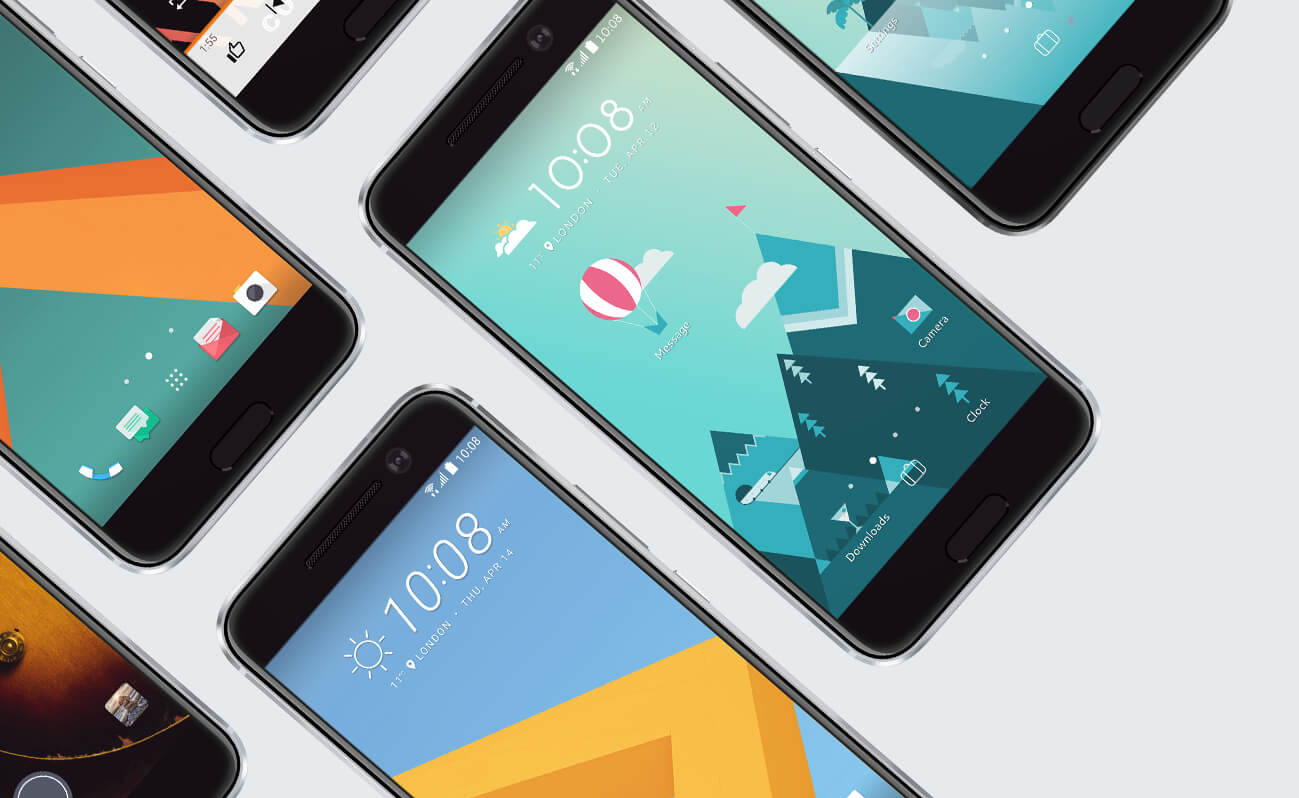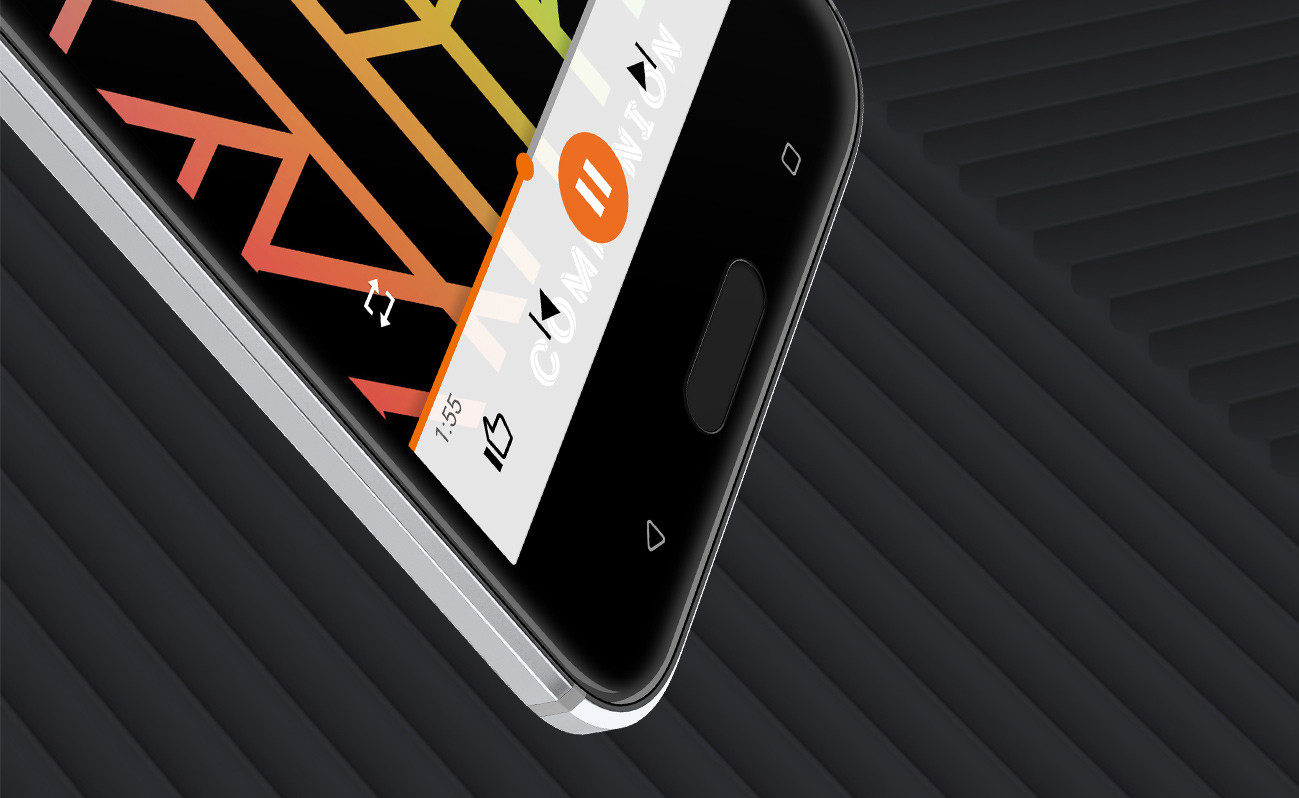
The HTC 10 is here. The long-awaited HTC flagship was announced today, closely matching previously leaked rumours of the phone’s looks, specs and features. While flagships have become more homogenous in 2016 — most sporting metal unibody designs, 5″+ displays, Android Marshmallow — the HTC 10 still has the capacity to surprise and delight. Let’s see how it distinguishes itself.
HTC 10 at a glance |
|
| Software | Android 6.0 Marshmallow + Sense |
| Display | 5.2-inch — 2560 x 1440 — Super LCD 5 |
| CPU | Snapdragon 820 — quad-core 2.15GHz |
| Memory | 4GB RAM |
| Storage | 32GB internal + Micro SD card slot |
| Rear Cam | 12-megapixel — UltraPixel 2 — OIS, f/1.8 |
| Front Cam | 5-megapixel — OIS, f/1.8 |
| Battery | 3000mAh — Quick Charge 3.0 |
| Connectivity | USB-C, BT 4.2, Wi-Fi ac, NFC |
| Speakers | HTC Boomsound Hi-Fi edition |
| Colours | Grey, Silver, Gold |
| Release | May 1st — £570 SIM-free |
| Accessories | Shop HTC 10 accessories here > |
State of the art hardware
As you can see in the specs table, the HTC 10 shares a lot of hardware with the Galaxy S7 and LG G5. That includes the same CPU, same RAM, same storage, and even battery sizes are similar. Wireless connectivity is near-identical across the three, and all include a fingerprint reader. Like the LG G5, it also comes with the most recent charging standards: USB Type-C and Qualcomm Quick Charge 3.0*. However, the 10 lacks the Galaxy S7’s wireless charging and waterproofing.
A tamer design this time
The 10’s design is much more standard too. HTC hit upon a good idea with the all-metal One M7, but the Taiwanese company failed to noticeably improve upon it for three years, while its rivals made the massive jump from cheap, plasticky phones to impressive glass-and-metal creations.
This year, HTC have opted to go with the flow, with an all-glass front panel bereft of the big stereo speakers that distinguished past HTC phones. Now, it’s just a big screen flanked by a earpiece at the top and a fingerprint reader at the bottom, like most other Android superphones on the market. The most unique design touch is the prominent chamfer along the rear of the phone, precision-cut to look good and rest comfortably in your hand.

With so many hardware and design similarities, the HTC 10 badly needs some unique features to set it apart from its rivals. HTC have opted to focus their attention on the phone’s cameras, software and audio. Here’s what they’ve come up with.
OIS all the cameras!
The 10 is the first phone to ship with two OIS cameras, one on the front and one on the back. OIS has become fairly standard for rear cameras, but putting it on the selfie cam is quite audacious. That allows for better-looking selfies in low light, and should combine well with the wide 86° f/1.8 lens.
What’s OIS? OIS stands for optical image stabilisation, and allows a camera to better counteract small hand movements and blurry photos. That’s particularly critical when shooting in low light, which demands longer exposure times.
The rear camera has also seen some attention, with a 12-megapixel UltraPixel sensor backed with a laser autofocus and dual-tone LED flash. The camera app includes a new Pro mode as well, allowing full manual control and RAW image capture. The phone is capable of the latest video standards too, including high quality 4K/30fps shooting and 720p/120fps slow-mo.
Not your father’s Marshmallow

The 10 ships with Android 6.0 Marshmallow, underneath HTC’s Sense UI. The latest version is much leaner than its predecessors, with fewer preloaded applications and unnecessary interface changes.
The biggest new addition to Sense is Freestyle, a new way of laying out your home screen. Basically, HTC have removed the usual restrictions from placing app icons and widgets, allowing you to place them overlapping one another, in layers or in groups.
Freestyle also introduces Stickers, essentially app icons that fit better with your background and are freely assigned to launch different apps. For example, in the forest themed phone shown above, you can see the clock app is launched by pressing on a tree, and messages are stored inside a balloon. It’s cute, and should allow for pretty intricate homescreen setups.
Audio systems engaged

Big audio has always been an important part of the HTC One lineup, and it still is on the 10. This time, the trademark dual stereo speakers have been set up differently, with one front-firing speaker in the earpiece and one downward-firing speaker on the bottom of the phone. That should allow the 10 to deliver better sound than most phones, but it might not be quite as balanced or loud as the One M9.
The HTC 10 also comes with Hi-Res audio, a 24-bit digital audio standard. It’s one of the few phones to be certified for Hi-Res audio, but it does demand higher-quality sources to make a real difference. (Otherwise, you’re just interpolating; you can’t create data that didn’t exist on the original recording.)
The phone also contains a 24-bit DAC and high-voltage / low distortion headphone amp, which could improve sound quality when you’re using a good set of headphones. HTC are including some impressive-looking headphones in the box, which hopefully will make the most of the new hardware.
HTC have also enlisted an unlikely ally in their fight against Samsung and LG: Apple. The company has licensed Apple’s lossless AirPlay standard, allowing the 10 to stream music to the Apple TV and AirPlay-compatible speakers out of the box.
Wrapping up
The HTC 10 is scheduled to launch on May 1st. We’re already preparing a wide range of cases and accessories to fit the phone, including some top-notch official accessories that we’ll spotlight soon.
Shop HTC 10 cases and covers > Shop HTC 10 accessories >
Thanks for checking out the article, and be sure to let us know what you think of the phone!